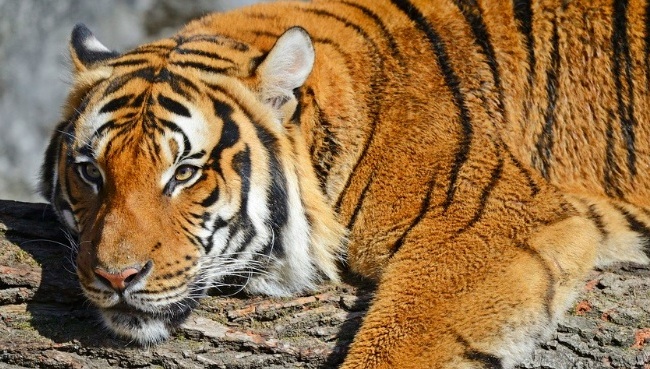
Over 40 Years of Protecting Tigers
Many successes that have been achieved in protecting tigers to date can be traced back to environmental protection organizations such as the WWF. The following lists several activities being conducted in several tiger regions:
- Support to authorities demarking tiger sabctuarities/refuges.
- Connection of sanctuarities via "green corridors": Without these corridors, contact between tiger populations would be complicated or denied by the island-like distribution of habitats.
- Acquisition of habitat: Deforestation of large areas for agricultural use has decreased tiger habitats by 93%.
- Stop to poaching: Especially the high demand for tiger products in traditional Asian medicine makes tiger poaching a lucrative business. Recently states such as China have banned the use of tiger parts in medicine with strict fines.
- Inclusion of the populace in protecting tigers: In India, for example, farmers were compensated when their livestock fell prey to a tiger. Those who live near a preserve and utilize natural assets are supported in the development of alternative livelihoods, for example through tourism. The WWF is also active in several projects in which the local populace in tiger regions is made more aware of the importance of the Big Cats as a worthy of protection in their home country - one through which money can be made through tourism. As an example, a unique tiger-curriculum was developed and used by more than 200 teachers in the Amur-region.
- Cooperation with Industry: In this way the WWF is working to motivate the paper industry to use no ingredients that would lead to overexploitation of tiger habitat.
Activism for Tigers Pays Off
Numerous successes have been achieved and give hope to the survival of the species:
- In November 2012, the Russian government with prompting from the nature preservation organization WWF established a new protective corridor for tigers wandering in the border areas to China. The Sredneussuriisky Protective Corridor in Primorje province newly links the Russian Sikhote-Alin-area with the Chinese Wandashan Mountain Range – two regions in which the Amur tiger resides. This represents another great success for tiger protective efforts as only in this way can a genetically varied and future resilient population of Amur tigers be preserved.
- In Cambodia a new protective area was established in 2014.
- As part of the International Day of the Tiger on July 29, 2013, the Nepalese government shared that the current census could be increased by 60 percent to nearly 200 animals. This increase would be due in part to an increase in the number of tigers, and also to improved census methods.
- WWF census taking at the Kuiburi-Nationalpark on the border to Myanmar shows that the tiger population is stable there. Indicators show that the Big Cats have even increased their territory there since 2006.
- In the Russian Far East approximately 6 Million acres of forest will be FSC certified as tiger living areas in the coming years.
- The WWF was able to lease primeval forest along the Bikin River for 49 years. This is a double win: first, the Amur tiger retains its living area and second, the native population of the region, the Udege and the Nanai, can remain in their homeland and carry on their centuries-old culture.
- In India there are a plethora of tiger projects, and tthe latest tiger census shows that in almost the tiger poluation is increasing in almost all Indian regions.
- In India 39 Tiger preserves could be established with up to eight preserves in various stages of development. About half of all tigers living in the wild worldwide are in India.
A huge step was made at the end of 2010
In St. Petersburg, all 13 national presidents and ministers of tiger-expansion countries agreed, also as a result of the WWF, to double the 3200 population of tigers in the wild by 2022 and pledged more than 300 million Euros to this end. Among the goals of this group, isolated refuge-islands are to be connected with one another using forest-corridors. The WWF will serve implementation of these goals as a critical partner and with several projects will give its all to ensure this goal is reached.
Source: WWF
